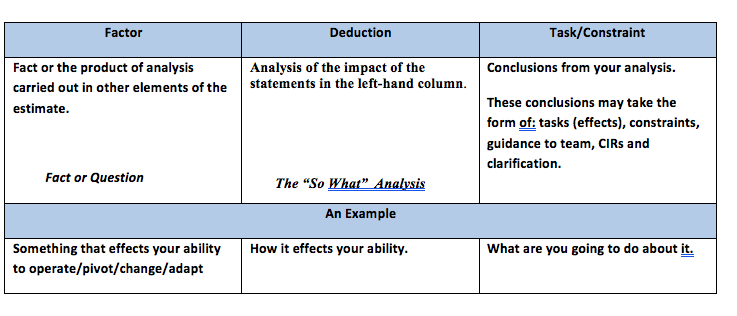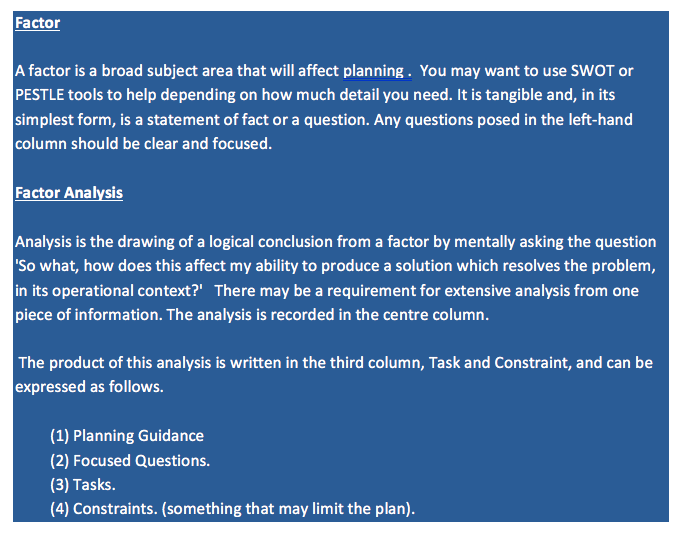| “ If I always appear prepared, it is because before entering on an undertaking, I have meditated for long and have foreseen what may occur. It is not genius which reveals to me suddenly and secretly what I should do in circumstances unexpected by others; it is thought and meditation.” Napoleon Bonaparte |
Current Situation
Irrespective of whether we function as a leader or business owner, we are currently facing a fast-moving, uncertain and chaotic world due to the COVID-19 crisis.
Timely and effective decision-making is a pre-requisite for success in business. Sometimes those decisions will be made whilst under pressure and becoming a separate challenge due to the brain being flooded with chemicals that may cloud judgement and accuracy.
On the one hand, decision-making can be intuitive, whilst on the other, it can be the result of a detailed analysis of a problem. Making the right decisions and plans in this current pandemic are the catalyst to future-proofing your business
Military Method of Planning and Decision Making
Since 2001 the British Army has used the ‘Combat Estimate’as its main Decision-Making Process. As you can imagine the Military across the globe is inevitably more resilient when it comes to working in high pressured environments. Leaders are conditioned to work under pressure, but they use a variety of tools to guide their thinking in times of chaos and crisis to ensure mistakes are not made. Mistakes in the military are about ‘life or death’ in business these words would convert into ‘success or failure’!
An ‘Estimate’ is a logical sequence of reasoning and thought, providing a systematic approach to problem-solving. The tool used for the ‘Estimate’ is 7 interrelated questions (7Qs) that help build a plan aligned to your leaders’ intentions and desired results. Additionally, these 7Qs help with the following:
a. It helps overcome the difficulty of ‘thinking straight’when under pressure, chaos, tired and frightened.
b. It provides a record of your thought process to justify your plan to others or provides a measure of reassurance that you have adopted the most effective solution as the result of some hard thinking.
c. It allows the dynamic evaluation of a plan in light of a change in the situation.
d. Enables a leader/manager and his team to reduce the number of options down to the most viable COA.
What Are The 7 Questions?
Examples of the questions are listed below and I have slightly modified them from military context to a more business context that you might find useful.
Q1 – WHAT IS/ARE THE SITUATION/COMPETITORS/CLIENTS DOING AND WHY AND HOW DOES IT AFFECT ME?
Thought-Provoking Questions/Ideas for Q1
- How does the current situation affect my clients?
- How does it affect my operations /tasks?
- What are the client’s intentions within my area of responsibility?
- What are my company’s intentions within the market and my area of responsibility?
- What is my competitor doing to adapt to change?
- Is my competitor pivoting quicker than us and will have an adapted product or service?
- Are my clients wanting to change contract conditions?
- Are my clients running out of cash – can we offer any financial offering
- What is our current financial runway – how much cash do you have in the bank
- What are my Critical Information Requirements (CIR) to help me plan the best way possible with up to date accurate data?
Q2 – WHAT HAVE I BEEN TOLD TO DO AND WHY?
Thought-Provoking Questions/Ideas for Q2 – (Job to Be Done Analysis)
- What is my manager’s intent and what is my part in his plan?
- What tasks are specified and what tasks are implied?
- What constraints are imposed upon me?
- What are my real timeframe and available resources?
- Do I need to communicate more with my client?
- Has the situation changed?
- Time has passed since you began your analysis
- Remain flexible throughout this process
Specified tasks are those stated in the directives received by the subordinate from his senior manager.
Implied tasks are other activities that have to be carried out in order to achieve the job to be done, including the requirement to support the senior leader’s main effort/goal.
Q3 – WHAT EFFECTS DO I NEED TO ACHIEVE AND WHAT DIRECTION MUST I GIVE IN ORDER TO DEVELOP A PLAN?
Thought-Provoking Questions/Ideas for Q3
- What is my intent with this situation aligned to my managers and his manager’s intent?
- What effects/tasks/impact do I want to achieve and in what order?
- What is my MAIN EFFORT – Eg. the most important goal to be achieved
- Above all else, what must I achieve in order to be successful?
- Who on my team do I need to achieve these effects?
Q4 – WHERE BEST CAN I ACCOMPLISH EACH ACTION/EFFECT?
Thought-Provoking Questions/Ideas for Q4
- Each effect/task/impact should be considered in priority order to determine where and how it can be best achieved.
- All aspects of each effect must be considered in full so that a plan can be made for each.
- How will I achieve each effect?
- Start with the main effort/goal and then any subsequent additional goals.
- What is the competition’s most likely course of action?
- What is the competition’s worst course of action for us?
Q5 – WHAT RESOURCES DO I NEED TO ACCOMPLISH EACH ACTION/EFFECT?
Thought-Provoking Questions/Ideas for Q5
- What’s my intent?
- Allocate my time and my subordinates’ time to each of the effects/tasks
- Confirm the task organisational structure for the upcoming job to be done.
- Are the resources focused on the main effort?
- Confirm the manpower, physical resources, tech resources/support.
- Identify possible future tasks, resources required.
- Plan ahead – but never wait for 100% of the information to start.
- Communicate – communicate
Q6 – WHEN AND WHERE DO THE ACTIONS TAKE PLACE IN RELATION TO EACH OTHER
Thought-Provoking Questions/Ideas for Q6
- Coordinate the actions of all subordinates, colleagues and tech support, and management support in time and space (i.e. Where do they need to be)
- Will the effects/tasks be achieved sequentially or concurrently?
- Critical consideration for timings.
- Create a timing coordination matrix.
- This is the timing coordination plan for the team
- What are the critical deadlines or milestones?
Q7 – WHAT CONTROL MEASURES DO I NEED TO IMPOSE?
Thought-Provoking Questions/Ideas for Q7
(Measures to prevent duplication of effort within the company) What can I do/not do
- What can I /not do?
- What can my team / not do?
- What must I not forget?
- What needs to happen before something else begins?
- Create reporting lines of communication and on what medium – Phone/email/WhatsApp etc.
- What method and frequency will I back brief senior management.
How to Complete the Estimate
If the product of the estimate will only be used by you and your immediate team, it may be completed in any format, experience will reveal the method you find most convenient. You may consider mind mapping, expanding graphical methods, network analysis, notepaper or electronic methods.
However, in order to have a format that can be handed over to someone else if required or that can be used to justify a decision to others, there is the requirement for a single technique that assists with your brainstorming process.
This is the formal written 3-column format. Graphical aids are integrated, but the supporting justification is presented in 3-columns.
When applied intelligently it produces a range of useful and accurate outputs that contribute directly to the development of a winning concept and a workable plan. Analysis of a chosen factor or question is recorded in a three-column table format, with the output listed in the right-hand column.
An example of a three-column table format is as follows:


Overall the 7Q must be designed for use not as a fixed template but as a means of stimulating the thought process. The process is dynamic and sensitive to change. This means that as new information is received, leaders may have to review previous questions to ensure that planning remains valid.


 sending...
sending...